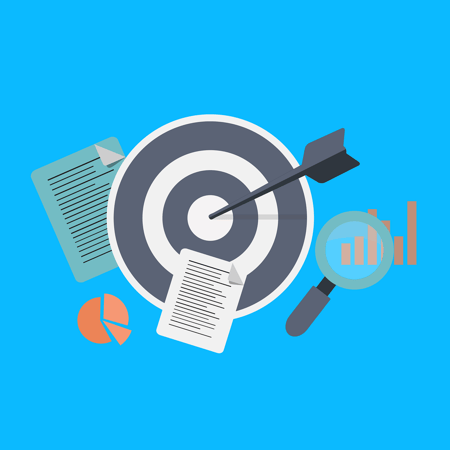Index Content
If you have a business, you need to know the importance of knowing what your target audience is, because it is essential to know your audience in order to focus your campaigns on them and thus be successful and get a return on your investments.
For this reason, today we explain what the target is and how to find the perfect one for your business. Keep reading so you don't miss anything!
what is targeting?
The target refers to the target audience, that is, the group of people to whom a company aims its products and services. As you can see, it is a basic and easy to understand concept.
So, when you hear about target is to refer to the group of people, whether they are customers if it is a business or audience if we talk about digital marketing, who have specific characteristics and thanks to these, have the potential to become a customer.
This means that if you have a brand, the target is the group on which all your efforts should be focused.
how to define your company's target?
Correctly establishing your company's target is a fundamental step, as the success of your campaigns will depend on them, because before selling your product or service you have to know who to sell it to.
Now that you know what the target is and why it is important to define it, let's see how to do it in depth. Let's start!

-
define the demographic profile
The first step you need to take is to obtain the easiest customer data, which in this case are the demographics: age, gender, location, profession, etc.
This data is very important, as it is not the same to address one age target or another. If your audience is under 25 years old, your products and services will most likely sell better through social networks, to give you an example.
-
define their characteristics
Here the data you will have to specify are those related to the socio-cultural environment, i.e. economic level, studies, languages, hobbies, buying behaviour, habits, etc.
As with the previous point, you must segment your audience well or your campaigns may fail. Continuing with the previous example, if your company is in charge of end-of-course trips, it is most likely that your audience will be under 25 years of age and Spanish, as in Spain it is customary to make this type of trip. If you target an older audience and, moreover, in countries where it is not customary, it is most likely that your campaign will be unsuccessful.
-
define their digital profile
In this section you have to find out where your customers are, whether they use social networks and which ones, how often they browse them, from which device they use them, how long on average they are on them, etc.
Answering these questions will help you to know when is the best time to launch a campaign, at what time and day it is best to publish content, etc. This means that defining this point well will also help you with your content strategies and SEO positioning.
-
conduct research
You will have to do a research to obtain and define all the information that we have exposed in the three previous points. For them you can carry out online surveys:
- online surveys, so that the users themselves answer the questions and you can collect their data
- conduct interviews, although this is more time-consuming, but it helps you to get to know your customer in depth. Normally you choose a group of people
- consult reports and studies. There are many studies by other companies that compile data that may be of interest to you in order to define your target. It would be interesting to consult this source of information as well.
- review the activity of your customers. If your company has been in operation for some time, review the movement of your customers, what they are like, what products they choose, on what dates they buy the most, etc. You can obtain data from them that will give you an idea of their buying behaviour.
-
define your buyer persona
These are two concepts that can be confused, but we will explain their difference. While the target or objective public refers to the group of people a company addresses without its own identity, the buyer persona is a more complex concept, as it is a semi-fictional profile that creates a personal profile of what the ideal customer is like.
The buyer persona goes further, because it includes not only demographic and socio-cultural data, but also pain points, needs and concerns, i.e. it is more specific. Therefore, it is an ideal complement to complete the information of your company's target. Therefore, in this part, you should create one or more buyer persona profiles, as needed.
This concept has grown in recent years in digital marketing strategies and especially in Inbound marketing.
It's time to get down to work,research your audience and write down all the data to keep them in mind. Once you have it well defined, you can integrate it into your digital marketing strategies to target your products to them and be successful .
we hope you enjoyed reading this!





